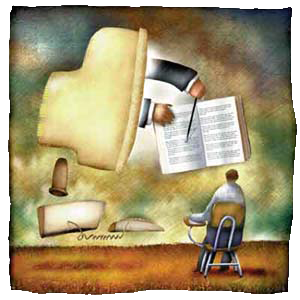Dale’s Cone of Experience is a way to describe various learning experience.
This was originally developed by Edgar Dale. The cone is based on the
relationships of various educational experiences to real life. It shows the
progression of experiences from the most concrete (by doing) to the most
abstract (by reading). This emphasizes learning experiences appeal to the
different senses and the different ways in which we learn. At the same content,
but in different learning ways have different results. In reading, we do not
have visual explanation, so we do not master what we are learning. But, when we
have visual explanation even when we do the real activity, the knowledge will
be easy to be mastered.
For example, we want to learn about how manage our blog
(creating, designing, posting, etc). When we read a book about how to manage
the blog, we will have many confusing thing although it have complete
explanation. But when we practice to manage the blog directly, we will have
more understanding and master this case.
Actually, in my opinion, it does not mean that concrete or
real experiences are better than abstract ones, but it all depends on what
learners need in learning.








